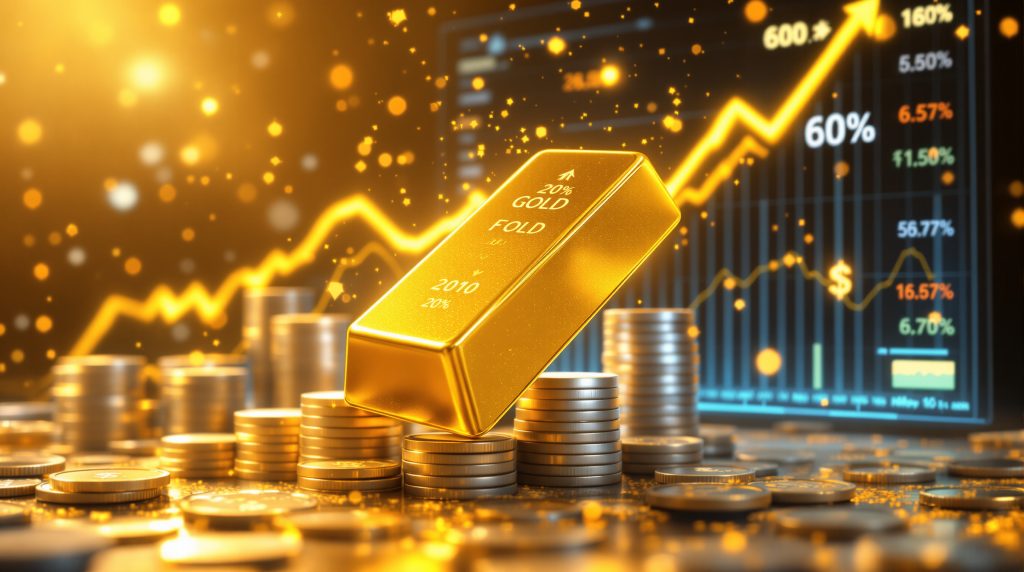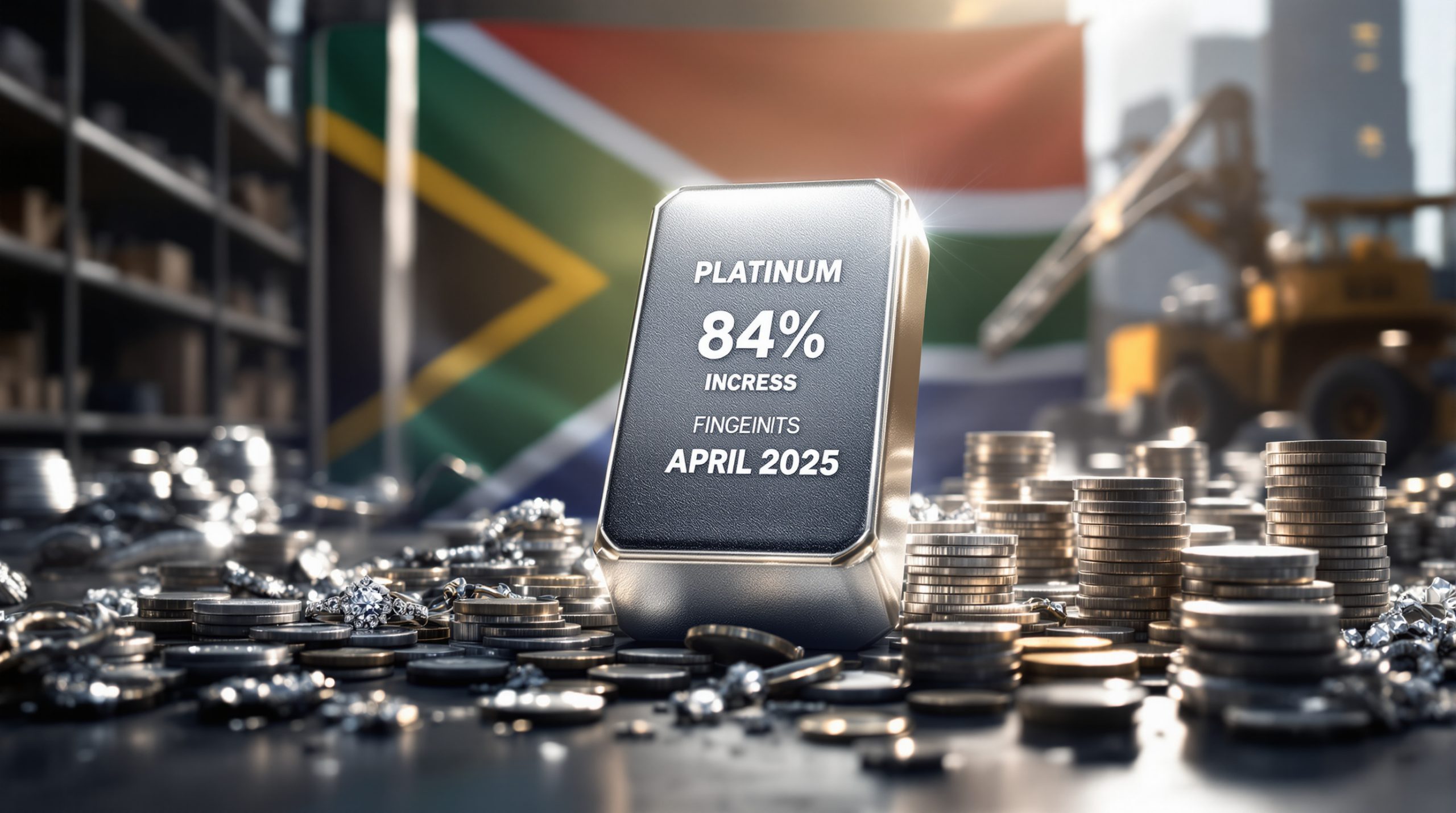The Gold FOMO Effect: Understanding the Record-Breaking Precious Metals Rally
With precious metals surging to extraordinary heights, investors worldwide are witnessing one of the most remarkable rallies in recent history. Gold's approach toward unprecedented price levels and silver's dramatic climb reflect a perfect storm of economic factors rather than a temporary market anomaly. The growing gold FOMO (fear of missing out) sentiment has many investors rushing to secure their positions in this historically reliable store of value.
What Is Driving the Current Gold Price Surge?
Gold's meteoric rise represents the culmination of multiple economic forces converging simultaneously, creating ideal conditions for precious metals to thrive. This rally stands apart from previous cycles due to its broad foundation of supporting factors.
Multiple Catalysts Creating Perfect Conditions
The precious metals market is experiencing support from several key areas:
- Persistent inflation concerns continue despite central bank efforts, with core inflation remaining above target at 3.3% year-over-year through September 2024
- US dollar weakness against major currencies, with the Dollar Index declining approximately 4% from its 2024 peak
- Record-high national debt reaching $33.7 trillion as of October 2024, representing approximately 123% of GDP
- Geopolitical fragmentation creating ongoing uncertainty in traditional markets
- Institutional repositioning as financial giants reconsider gold's role in portfolio construction
The World Gold Council notes these multiple factors have created structural support that distinguishes the current rally from previous cycles, making it potentially more durable. Furthermore, the record gold highs being achieved have sparked widespread media attention, further amplifying investor interest.
The New Wave of Investor Interest
Perhaps most notable about the current surge is the influx of previously skeptical investors entering the precious metals market. Historical data shows only about 10.8% of American households owned gold or gold-related investments as of 2023, with physical ownership estimated at just 3-5% of households.
This relatively low market penetration provides significant room for new capital inflows as mainstream investors reconsider gold's role in modern portfolios. The contrast with stock ownership (approximately 61% of Americans) demonstrates the potential growth runway remaining. Additionally, the gold-silver ratio analysis indicates that silver may still have considerable upside potential relative to gold.
How Are Major Financial Institutions Responding?
The precious metals surge has prompted remarkable shifts in how major financial institutions view gold as an investment asset, representing a potential paradigm shift in mainstream investment philosophy.
BlackRock's Strategic Portfolio Shift
In a notable development, BlackRock—the world's largest asset manager—increased its recommended gold allocation in 2024. BlackRock strategists stated in March that "gold deserves a strategic allocation in portfolios given its diversification benefits and protection against tail risks."
This institutional endorsement reflects growing recognition of gold's role in portfolio construction beyond traditional market cycles. As noted by the Financial Times, gold's traditional role as a hedge against uncertainty has been reinforced by recent market volatility.
Goldman Sachs and JPMorgan Analysis
Goldman Sachs raised its gold price forecasts multiple times throughout 2024, ultimately projecting $2,700 per ounce by early 2025. Their analysts cited "structural support from central bank buying and cyclical support from expected Fed rate cuts."
Similarly, JPMorgan strategists noted that "gold's role as a portfolio diversifier has strengthened, with correlations to equities remaining low or negative during market stress periods."
Financial Media Embracing the Gold Narrative
Financial publications that historically took minimal interest in precious metals have shifted their coverage dramatically. Headlines specifically referencing "gold-plated FOMO" powering the record-breaking rally reflect growing mainstream awareness.
This attention creates a self-reinforcing cycle as more investors research gold allocations, potentially drawing additional capital into a relatively small market. The gold market surge continues to gain momentum as new investors enter the space, creating a powerful feedback loop.
Is This the Beginning or End of the Gold Bull Run?
When prices reach all-time highs and mainstream financial media covers the rally extensively, experienced investors naturally question whether the market has entered a euphoria stage that might signal a top.
Warning Signs of Market Euphoria
Several traditional warning signals warrant consideration:
- Unprecedented price velocity with gold gaining approximately 35% year-to-date through October 2024
- Technical indicators showing overbought conditions on multiple timeframes
- Mainstream media coverage reaching historically high intensity
- New investor influx creating potential for market instability
These factors suggest caution for new entrants making large lump-sum investments at current levels. However, the gold price forecast from many analysts continues to be positive despite these warning signs.
Counterarguments for Continued Strength
Despite these warning signs, several factors distinguish the current rally from previous peaks:
- Central bank purchasing continues at near-record levels, creating structural support
- Low precious metals ownership among general population (under 5% for physical gold)
- Persistent macroeconomic challenges supporting safe-haven demand
- Institutional allocation models being revised to include gold
- Physical market dynamics showing limited profit-taking despite record prices
Academic research on commodity bull markets shows gold cycles typically last 8-12 years, suggesting the current rally may have further room if historical patterns hold. According to recent analysis by Forbes, the current gold FOMO isn't limited to small retail investors but has spread to sophisticated institutional players as well.
What's Happening in the Physical Precious Metals Market?
The activity in physical precious metals markets provides important insights into the sustainability of the current rally and investor sentiment beyond paper trading.
New Account Openings and Buying Patterns
Storage facilities and precious metals dealers report significant increases in new account openings, indicating fresh capital entering the market. Interestingly, despite record prices, sellers remain relatively scarce—suggesting continued confidence in future price appreciation.
This dynamic differs notably from previous market peaks when profit-taking accelerated as prices reached new records.
Metal-Specific Demand Trends
Different precious metals are experiencing unique demand patterns in the current market:
| Metal | Current Demand Pattern | Supply Situation |
|---|---|---|
| Gold | Strong consistent demand with minimal profit-taking | Adequate supply with moderate premium increases |
| Silver | Accelerating interest with gold-to-silver ratio plays | Rising premiums with American Silver Eagles at $4-6 over spot |
| Platinum | Emerging interest after long dormancy | Limited physical product availability due to small market size |
Silver has gained approximately 43% year-to-date through October 2024, with the gold-to-silver ratio declining from 90:1 earlier in the year to approximately 82:1. This ratio compression typically occurs during strong precious metals bull markets as silver outperforms.
US Mint Sales Data
American Eagle gold coin sales reached approximately 700,000 ounces through September 2024, while silver Eagle sales totaled approximately 19 million ounces. These figures remain below the 2020-2021 peak levels but substantially above pre-pandemic averages.
The relatively steady sales despite higher prices suggest continued strong retail demand for government-minted products.
How Are Investors Responding to Global Uncertainty?
The precious metals rally exists within a broader context of global uncertainty driving investor behavior in specific directions beyond simple price speculation.
Offshore Storage Demand Increasing
A notable trend in 2024 has been rising interest in offshore precious metals storage, particularly from American and Canadian investors. Switzerland imported 133 tonnes of gold in August 2024 alone, representing a 48% increase from July.
This growing demand for international storage solutions suggests concerns about domestic political and economic stability that extend beyond simple price appreciation strategies.
Labor Market Instability
Labor disputes and strikes in various sectors reflect broader economic stress that supports precious metals as a stability hedge. Recent labor actions across multiple industries highlight inflation's continued impact on household finances despite official statistics suggesting moderation.
Balancing Factors in the Gold Market
While investment demand remains robust, certain traditional gold market segments show sensitivity to higher prices:
- Jewelry demand experiencing price resistance from manufacturers and consumers
- Central bank purchasing potentially becoming more selective at record prices
- Mining output potentially increasing in response to sustained high prices
These factors could provide natural market balancing mechanisms preventing extreme price spikes and subsequent corrections.
Should New Investors Enter the Market at Record Highs?
For those considering precious metals for the first time during this period of price strength, the decision requires careful consideration of both opportunities and risks.
Strategic Approach for New Entrants
Rather than making large lump-sum purchases at record prices, new investors should consider a structured approach:
- Build educational foundation before significant investment
- Implement cost averaging rather than one-time purchasing
- Diversify across metals (gold, silver, platinum) to spread risk
- Maintain long-term perspective beyond current price action
- View physical allocation as insurance rather than speculation
This measured approach balances the risks of entering at elevated prices while still establishing precious metals exposure if macroeconomic conditions continue deteriorating. Consulting a comprehensive gold investment guide can help new investors navigate this complex market.
Balancing Portfolio Protection and FOMO
The fundamental case for precious metals remains strong despite high prices:
- Currency debasement continuing globally with national debts exceeding 100% of GDP in many developed economies
- Real interest rates remaining historically low despite nominal rate increases
- Traditional markets trading at elevated valuations relative to earnings
- Geopolitical fragmentation threatening stability and global trade systems
These structural factors suggest maintaining some precious metals allocation regardless of short-term price movements.
What Makes Gold and Silver Different from Other Investments?
The psychology behind precious metals ownership differs fundamentally from other asset classes, explaining why selling behavior doesn't follow typical investment patterns even at record prices.
Psychological Differences in Ownership
When investors make gains in traditional investments like stocks, profit-taking is common and expected. With precious metals, many investors view their holdings as wealth preservation rather than speculative vehicles, reducing the incentive to sell even at significant profit levels.
This mindset distinction explains why storage facilities report limited profit-taking despite record prices—a phenomenon rarely seen in other markets reaching all-time highs.
The Wealth Preservation Mindset
For many precious metals owners, the fundamental question becomes: "What would I exchange my gold and silver for?" With concerns about:
- Fiat currency devaluation
- Overvalued traditional markets
- Limited alternative safe havens
- Continuing economic uncertainty
The incentive to convert precious metals back to fiat currencies remains limited even at record prices. This creates a psychological floor under the market as existing holders maintain their positions.
How Might the Precious Metals Market Evolve?
Looking forward, several factors will likely influence the trajectory of precious metals prices and market dynamics over the coming months and years.
Key Indicators to Monitor
Investors should watch these crucial market signals:
- US dollar strength/weakness as a primary price driver
- Interest rate policy from major central banks
- Inflation persistence beyond central bank targets
- Central bank purchasing patterns as prices remain elevated
- Institutional adoption of precious metals allocation models
- Physical market premiums indicating supply/demand balance
The interaction between these factors will likely determine whether the current rally continues, consolidates, or experiences a significant correction.
Potential Market Scenarios
Several possible outcomes exist for the precious metals market:
| Scenario | Description | Likelihood | Impact on Prices |
|---|---|---|---|
| Continued Climb | Steady upward trajectory with minor corrections | Moderate | Gradual appreciation with volatility |
| Euphoric Spike | Parabolic price movement followed by sharp correction | Possible | Short-term extreme gains, significant pullback |
| Consolidation Phase | Trading range established near current levels | High | Sideways movement building base for next move |
| Macroeconomic Shock | External event triggering flight to safety | Unknown | Potential for explosive upside movement |
The most sustainable outcome would likely involve periods of consolidation allowing market fundamentals to catch up with price advances, creating a more durable long-term uptrend.
FAQs About the Gold Rally and FOMO Effect
Is it too late to buy gold at current record prices?
Historical perspective suggests caution when purchasing any asset at all-time highs. However, the macroeconomic factors supporting gold FOMO remain strong. New investors should consider dollar-cost averaging rather than making large one-time purchases, allowing them to establish positions while reducing timing risk.
Why is silver outperforming gold in percentage terms?
Silver typically exhibits higher volatility than gold during precious metals rallies due to its smaller market size and dual role as both monetary and industrial metal. The total silver market is approximately 1/10 the size of gold, causing price movements to be amplified in both directions. Additionally, industrial demand from sectors like solar panel manufacturing creates additional demand pressure.
How does the current rally compare to previous precious metals bull markets?
The current rally shares characteristics with previous bull markets, including dollar weakness, inflation concerns, and geopolitical uncertainty. However, the institutional adoption element represents a new factor that could potentially extend and amplify the movement. The 2001-2011 gold bull market lasted approximately 10 years with a 604% total return, suggesting current gains may have further room if similar patterns hold.
What signals would indicate the rally is ending?
Key indicators to watch include: widespread media coverage reaching maximum intensity, significant increases in sellers at dealers and storage facilities, rapid price movements without consolidation, platinum-gold ratio normalization, and resolution of underlying macroeconomic issues driving safe-haven demand.
How much of a portfolio should be allocated to precious metals?
Traditional recommendations range from 5-10% for conservative investors to 20-25% for those more concerned about economic instability. BlackRock's increased allocation recommendation represents a significant shift toward greater mainstream acceptance of precious metals as portfolio components.
Further Exploration
Readers interested in learning more about precious metals market trends and investor psychology during price rallies can find additional educational content from various industry experts discussing the behavioral aspects of gold investment during bull markets.
Ready to Capitalise on the Next Mining Discovery?
Stay ahead of the market with Discovery Alert's proprietary Discovery IQ model, which instantly identifies significant ASX mineral discoveries and transforms complex data into actionable investment opportunities. Explore historic returns from major discoveries and position yourself for potential exceptional outcomes by visiting the dedicated discoveries page.




